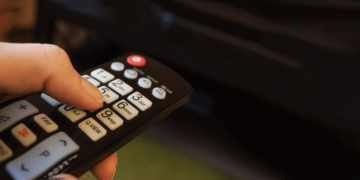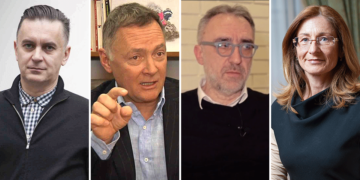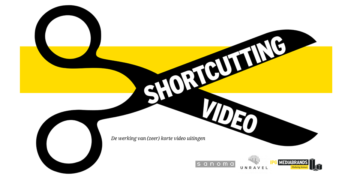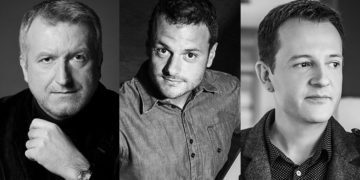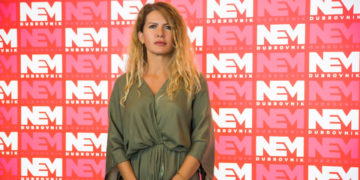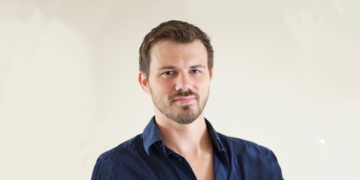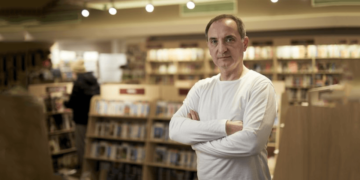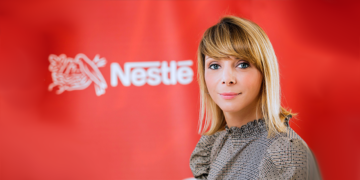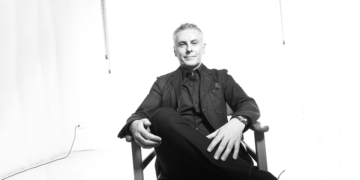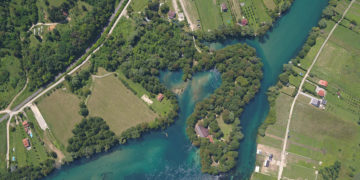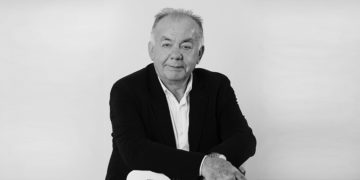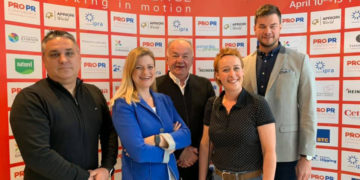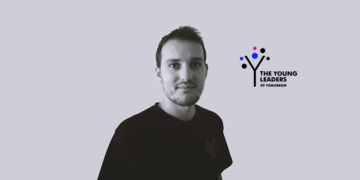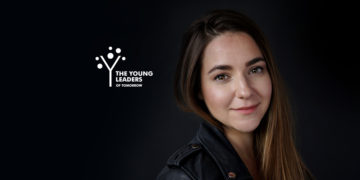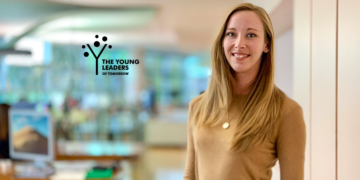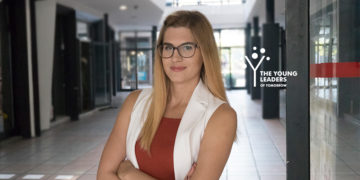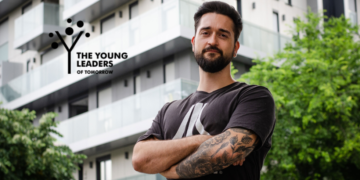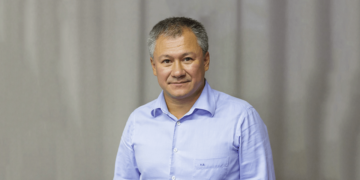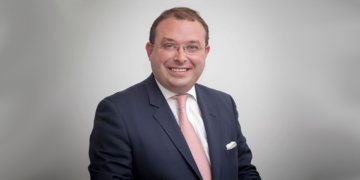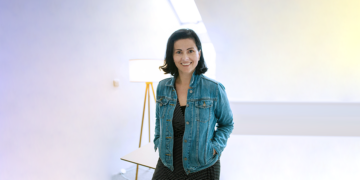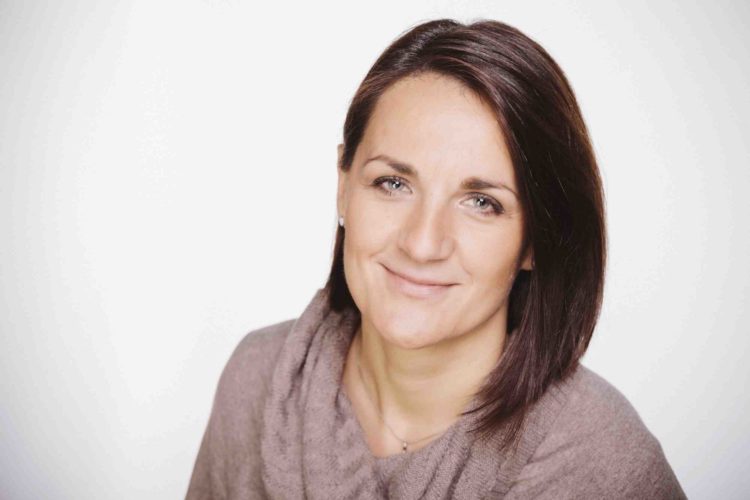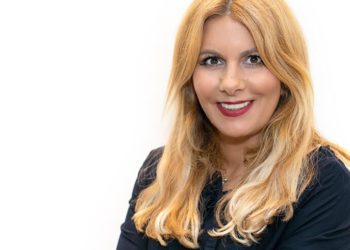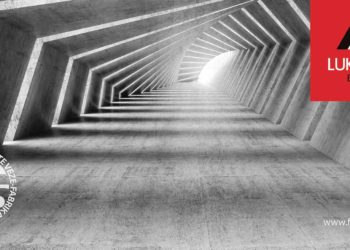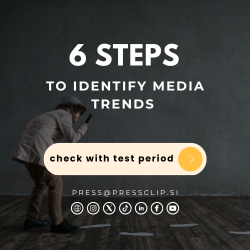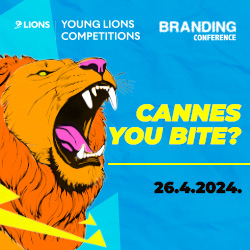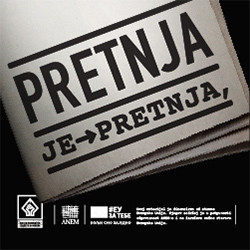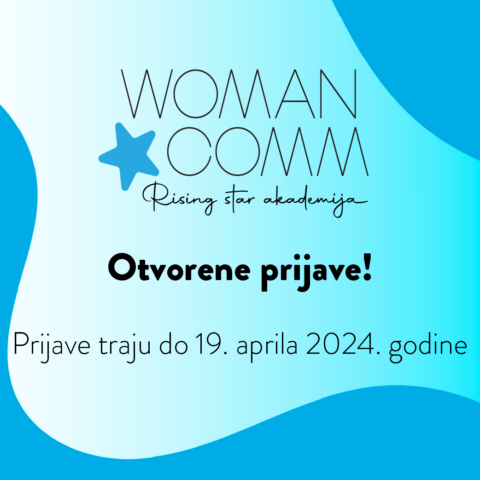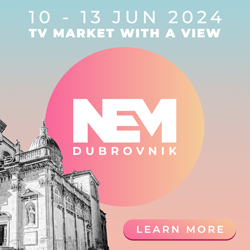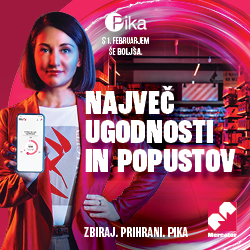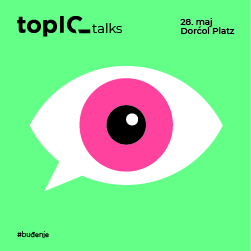Drugi jezik na kojem je dostupan ovaj članak: Bosnian
By: Ekrem Dupanović
I met Maja Čulig, Marketing Director of Addiko Group, two months ago in Bihać, during the Creative Republic conference. The organizers asked me to moderate a panel discussion on the rebranding of Addiko Bank, whose participants were supposed to be Maja Čulig and Ivanka Mabić Gagić, Head of International Business at Bruketa&Žinić&Grey agency. The theme of the panel – rebranding of Addiko Bank, truly deserves to be analyzed and discussed at professional conferences. I have to admit that I didn’t know much about this project – nothing more than what we already published on the Media Marketing web portal at the time the new bank was launched. But what I did have was the experience. Customer experience, to be exact. Since I am a client of Addiko Bank (both my company as well as myself), I also “experienced” this rebranding. One Monday morning I entered the bank and thought I came to the wrong one. I walked out, took a few steps back, and saw the sign saying “Addiko”. At the beginning of the panel discussion, I took out my Addiko Bank card. I smelled it (it actually has a nice smell), I showed it to the audience and won over my interlocutors, who had no idea about my customer experience.
The basic rules of the panel imply the need for the moderator to stir up some tension between the participants, so that the discussion would be more interesting. I couldn’t do that. First of all, it’s not nice to create tensions between an agency and its client – the rebranding project we talked about was tense enough from its onset. Secondly, how could I cause a fuss with my own bank? That’s something you simply don’t do. So the discussion was very civil, which doesn’t mean it wasn’t interesting. It was very interesting indeed. So interesting that I decided to publish the whole conversation Maja Čulig and I recently had in Zagreb.
Prior to joining Addiko Bank, Maja Čulig spent ten years in telecommunications. She had a great job at Tele2 Croatia, which was a small company when Maja started working there. The company grew rapidly, and Maja grew with it. When she arrived, the company had 50 employees. When she left a decade later, there were 250 of them. It was a completely international environment. The management was in Sweden, and the company was dominated by the Swedish way of thinking. Being part of an international organization meant using standardized creative solutions from Sweden and other more advanced markets – there was no local creativity.
“Was there a big difference in the way of thinking between the North and the South of Europe? At no point did we succeed in making a creative solution which would absolutely fit everyone. Sweden, the Baltic countries, Kazakhstan, Croatia, the Netherlands, Russia… fitting all this into one was practically impossible. In Croatia we have taken over the creative concept ‘La Famiglia’ from Russia and used it for several years. After that, we adopted the concept of Gregor the Black Sheep and it was one of the most successful things in the group. It was a concept which was accepted in Sweden, the Netherlands and Croatia. We later realized that the markets are too different and if we wish to be different in communication, we need to work on concepts which are fully customized to the area we do business in,” Maja recalls. This was a great success because Croatia, as a small country, managed to be allowed to do something on our own in such a large group. A one-year process of repositioning and rebranding of the company went under way. What we wish to achieve, how we plan to communicate, introducing comparative advantages which Tele2 Croatia did not have at the time, etc. A pitch for creative agencies was set up. It took quite a long time. The research carried out showed that the proposed concept we will go with is circus, with the Ta-daa slogan which the Swedes had a hard time understanding. But in Tele2 Croatia we still decided to do things a little differently. The campaign was realized in cooperation with Imago agency and achieved great success.
MM: And just when you were supposed to enjoy the fruits of your labor, you jumped from one adventure into another, much bigger one. You moved to Addiko Bank where you were immediately greeted by a surprise.
Maja Čulig: The bank had changed the owner, and was at the beginning of a large rebranding and repositioning of the entire old Hypo Alpe-Adria-Bank. They asked me to join the team and lead the process of rebranding in six countries. It was a great professional and personal challenge for me. On the other hand, as you said, I wanted to enjoy the fruits of my hard work. The Tele2 Croatia rebranding project was developed over a period of one year. There was a lot of turmoil and rethinking, but eventually I decided to accept the call and participate in such a big repositioning of a company which had a reputation it had thanks to Hypo Bank. Such an opportunity does not present itself very often. It was a completely new story in which we had to start from scratch – an empty canvas which had to be painted.
MM: You started with the name which actually doesn’t have any meaning.
Maja Čulig: Yes, we started from a name which didn’t have a ‘predefined’ meaning. We engaged the agency Prophet from London and worked with them on the entire visual identity and the name. When they presented the name to us, our first reaction was: “What does that mean?” They said: “Right now, it doesn’t mean anything. It is up to you to add meaning to it. Everything you do, and what you will be doing, will mean Addiko.” At first, this was a bit of a shock to us. But when we gave it a better thought, we realized it actually made perfect sense, it fitted the situation we found ourselves in and exactly what we wanted to achieve. Then there was a question of creative expression, ie. platform. All the other banks had a human component in their ads. There were always some emotional moments – a wedding, purchasing a home, moving, family matters… Our positioning strategy prompted us to say “OK, let’s be as simple as possible, as clear as possible.” And we did just that, of course both internally through testing our products, but also through communication which had to follow this line of expression. We said that we don’t have to have some touching story in our ads, but we have to be clear in our communication and tell people exactly what it is that we are offering to them. Our tv ads last for 15 to 20 seconds. We don’t have people in our ads, we have an animated character and a striking color which is unusual, and which gave us quite some trouble, but all this gave us a completely new, original concept, never before seen on the market. Clients today accept it very well. No one has the time or the will to watch ads of 30, 40 or 50 seconds, no matter what is ultimately communicated. With us, everything is quite simple. You have a problem, we have a solution, if you need a loan, bring your ID and if everything is in order, you will get the loan in 30 minutes.
MM: And then the deadlines hit.
Maja Čulig: It took a long time for things to fit in place, and then in February 2016, we really hit a roadblock, because at that point we still had nothing concrete, and the plan was for the rebranding to be completed by September. We also had a local partner, Bruketa&Žinić agency (now Bruketa&Žinić&Grey). The project was huge, and every day it was getting bigger and more demanding, while the time restrictions were getting tighter. In the business sense, the bank was also undergoing restructuring and transformation where it was necessary to act on the internal level as well, and turn employees into believers in the new brand, because things don’t work without the internal brand ambassadors. We started working, under a very ambitious deadline, and we still didn’t have a name, the visual identity, new brand and corporate values… In the course of our work, we were told that the deadline must be moved, that September would no longer work, and that we have to present the new brand already in the summer.
MM: When we talk about people, the name of Ivanka Mabić Gagić pops out. She was the team leader in Bruketa&Žinić.
Maja Čulig: Yes, at that moment the whole team was in place, we worked 12 hours a day, both in the company and the agency, we were giving approvals for materials at nine, ten o’clock in the evening, Ivanka and I were on the phone constantly, aproving mountains of materials coming out of the agency… I could say that we were all available around the clock. It was a very ambitious plan, and then came the moment when I had to tell Ivanka that the deadline was pushed closer, and that we cannot hit the market in September, but rather in July. When I told her, she asked: “Are you joking?” I replied it wasn’t a joke, we have to launch in July, even if we had to leave out some things we initially planned.

MM: And since the agency doesn’t like losing engagements, including those things you wanted to leave aside, they accepted that impossible deadline?
Maja Čulig: They did. Ivanka asked for a day to consult with her colleagues. That’s where our conversation ended, and I was left somewhat in doubt, not to say in fear, that I would receive a call asking us if we were insane, that they can’t do it, that it’s not even possible. Ivanka called the day after and said, “OK, we can do it, but we need to strengthen our team.” And we accepted that. We had a limited budget and decided to give up some other stuff just to finish the rebranding in such a shortened time. We don’t do such big things every day, and this launch had to be perfect. Ivanka boosted her team, brought in some new people, we continued to work 12 hours a day and on July 7 we presented, on July 11 launched the new brand in five countries. Banks in Bosnia and Herzegovina joined a bit later, on October 31, although they were also ready in July.
MM: This, of course, included the complete rebranding of all bank branches, new communication materials in large quantities, new uniforms for the employees…
Maja Čulig: The project consisted of ten subprojects with their own project managers, in order to make everything ready for the big launch. From a new website, creative concept, new branch and office design to new portfolio of products and services which we completely changed. We had too many different types of loans and we reduced them to two essential ones. We had seven cards, and we ended up with two, all in line with taking away all that was unnecessary. We wanted to provide people with clear, simple and direct banking. They don’t need eight types of loans they don’t understand. We had a complete rebranding of all branch offices, everything had to be changed practically overnight, including IT systems… Literally everything. We were building a completely new, different bank.
MM: And the clients felt none of all that. The bank was open, all the time.
Maja Čulig: They didn’t feel a thing. When they came to an branch office and asked “What happened here?” they got a simple answer: “Hypo is now Addiko”. We didn’t want to dwell on Hypo anymore. When they bought the Hypo Bank, the new owners said: “We now want a completely new bank.” And indeed, to all that Hypo represented, Addiko is diametrically opposed. We have one loan which meets the customer’s main needs, and those who want it will take it, those whose needs it doesn’t meetwill go somewhere else. And that’s OK. We don’t, nor wish to offer everything to everyone. We have focused on things where we think we can be better than others, and that is why, instead of doing many things, we do only a couple, but try to make them flawless. Accordingly, we have also reduced the paperwork needed to approve a loan from 77 pages to only seven. If we could get rid of 70 pages, then I wonder what their content was, what their purpose was in the first place. It’s not easy to be simple, it’s not easy to speak in an easily understandable language, and it’s not easy to explain to people what it is that they are buying and what they will have to pay for it.
MM: Did the marketing department of the bank sail into some calmer waters after the rebranding, or…
Maja Čulig: (Sigh) I wish it were so, but after the rebranding I would say that marketing has gained even more importance. In banking business, marketing is becoming one of the most important functions. It has always been an extended hand of the sales. “We have a loan and now marketing needs to come up with a campaign for us.” That’s the usual story, but with us it’s completely different. Marketing is involved in creating products from the very start. In our bank there is an awareness of the fact that a brand is far more than just advertising. It means that everything we do and everything we communicate, we also have to deliver to our clients. And that which is too complicated to communicate is simply not good enough. We often have expert discussions in the bank with people who are really familiar with banking, but if it is too complicated for us in marketing to communicate, it means that our clients won’t understand it either and we modify, or completely abandon the product altogether.
MM: How is the marketing function of Addiko bank organized?
Maja Čulig: We have something called a matrix organization, which includes both group and local functions by country. Then there is some kind of cooperation of group marketing with group product, group sales, and parallel with that it is implemented locally at all levels etc. So, in individual countries, there is local marketing that must both be horizontally and vertically aligned with the strategy of the entire bank and the local needs. It has to meet the brand guidelines and implement an umbrella campaign on all six markets.
MM: When you did the rebranding, Bruketa&Žinić&Grey had to have signed agreements with all the banks.
Maja Čulig: Yes, with all of them, because each bank is a separate legal entity. Each bank has its own function, its own budget, and the group functions are there to serve and give guidance as to how we want to implement something, in order to fully build a strong, recognizable regional brand.
MM: So you don’t have a regional budget, or is something common for everyone, and the rest is specific for each individual market.
Maja Čulig: Each country has its own local marketing budget, and there is a group level marketing budget for financing certain strategic projects for the entire Group.
MM: What is currently important in the marketing of Addiko Bank?
Maja Čulig: We are working intensively on the Addiko transformation in order to be faster and more streamlined, and we have to do a lot of things digitally…
MM: What does a digital transformation of a bank entail?
Maja Čulig: Digital transformation is perhaps misunderstood in the market. Digital doesn’t just mean to offer services online. Digital transformation means that the whole company has to adapt to a new era. Recently, for example, we have established a software robotics department, now we have people working on that so we could be faster in our development. It is important how you adapt the organizational culture to the new age. That’s something we will have to work a lot on, both through education and through tools that are used by our staff no matter where they work. We are often on the road, so our office must be our smartphone, tablet, etc. To be able to work I have to have systems which support and follow that. Digital is a very broad term and we really do a lot of work on it.
As for marketing, there are some projects that we have already launched, such as Addiko Chat Banking via Viber. We are the first commercial bank in central-eastern and south-eastern Europe, and among the first in the world, to launch such a service. We have shown that chat services can be connected with banking, and that we can bring banking to where customers are. We’ve introduced chat bots that give people someone to guide them when they want to get a loan, to arrange a meeting at a branch office and so on. So we do a lot of work on digitalisation. We were among the first banks in the region to create something we called the Addiko Express branch office in shopping centres, which look more like an “experience store” than a bank. The first one was opened at the BTC Centre in Slovenia, in Croatia we also have one in Zagreb at Avenue Mall. You enter a branch with no banker, just an advisor who helps you use a tablet, explains how to ask for a loan or open an account, explain some of the smartphone options so you could do everything on your own. There is also an interactive table where you can play, calculate a loan instalment, etc. What is fascinating to me is that people enter the bank just to see what’s happening inside. Now imagine a traditional bank – would anybody go in just to see what going on? A lot of things are happening here. People can have fun, make a selfie, play at this interactive table, find out something, ask for a loan. To be able to do all this, we had to solve a lot of things internally. The task of marketing throughout this transformation is to support that brand, see how to promote it, how to explain to people how simple everything is and do it in simple terms. Our goal is to make banking as easy as possible.
MM: You’ve invested a lot of effort and the well-deserved awards came your way.
Maja Čulig: The industry sees what we are doing. They see the progress that has been made. We won 14 local, regional and international awards for everything we did in such a short time. From the very brand, over office design, to digital innovation award. I’m especially proud of the international award Transform Awards Europe in London, where we were nominated in six categories for rebranding, strategy, visual identity, etc. And we won all six in competition with big brands. When Addiko Bank, as a new bank, receives so many awards it is a very good thing. We were also shortlisted for the Euro Effies as the only bank from Europe and the only brand from our region.
Clients see that we have made great progress, the industry sees it, we are satisfied and it all means that we can’t help looking forward to 2019.

